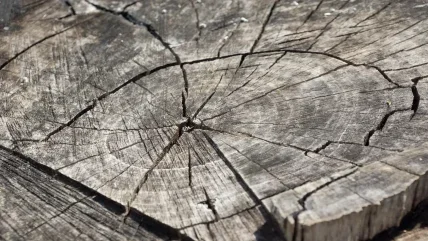
This year, an article in Nature presented evidence of the structural use of wood by early humans, some 476,000 years ago. The work was done on archaeological samples collected at Kalambo Falls back in the 1950s, which, by comparison, suddenly does not seem so long ago. Wood science has come a long way in the last half a million years. It is now helping to find our way towards a new net-zero future, but still has healthy old roots thanks to ideas planted by previous generations.
Surely one of the most widely referenced works in wood science is “The Strength Properties of Timbers” by Gwendoline M Lavers. Despite being old and out of print as hard copy, the book commonly referred to by British wood scientists simply as “Lavers” is still much used – most recently helping to inform policy on new planting to diversify timber species to mitigate the growing risks from pests, diseases and climate change. The book was initially published in 1967 by the Ministry of Technology as Forest Products Research Bulletin Number 50, and according to the listing in the April issue of Nature that year it cost 7 shillings and 6 pence. Later editions were published by the Building Research Establishment (BRE) from which it can still be purchased as a PDF for almost the same equivalent cost.
Of the author, it seems that little is known these days, which is a great shame. Historical records tell us that Gwendoline Lavers was born on June 22, 1915 in the parish of St Annes, London, not far from where the IOM3 is now located. By the time of the 1921 census she was living at Sloan Cottage in Watlington, Oxfordshire. From this record we can guess that she took her middle name, Merrin, from her maternal grandmother.
The 1939 register of England and Wales gives Gwendoline’s residence as Wykeham Rise, Oxfordshire, and at the age of 24 she has her occupation listed as “laboratory assistant companion”. We know from other sources that this would have been at the Forest Products Research Laboratory (FPRL), conveniently a few stops down what is now the Chinnor and Princes Risborough heritage railway line.
The FPRL was established in 1925, opening the Princes Risborough laboratory in 1927. One of the rst members of staff was Bernard John Rendle, who was later to write the book “Fifty years of timber research: a short history of the Forest Products Research Laboratory (FPRL), Princes Risborough”, published by HMSO in 1976. Sadly the book does not tell us much about Gwendoline, only that she joined sometime between 1929 and 1939. By then it had become one of the world’s leading centres of timber research. We are told that in 1928 the laboratory tested 20,000 small clear specimens and that the timber mechanics section was running like a mass production line – and this was before the laboratories were expanded for testing empire timbers in 1930. It was this very significant body of data, collected over the years by the timber mechanics branch where Gwendoline was working, which became the basis of the deceptively simple tables in her book.
Gwendoline was a very active member of the Soroptimist volunteer service for women, along with Jean Taylor who was later to become the president of the Institute of Wood Science (1986-1988). Rendle’s book also gives some general interesting insights into the community life of FPRL. A laboratory magazine called “dry rot” was produced at Christmas time, and the 1951 issue included a parody wood information report for the species “Peculia odorata (Phew)”, described as “inclined to take the edge off tools and the appetite off sawmill operatives”. This is, of course, fictional, although perhaps not entirely invented.
Gwendoline died in 1995 but her work lives on.





